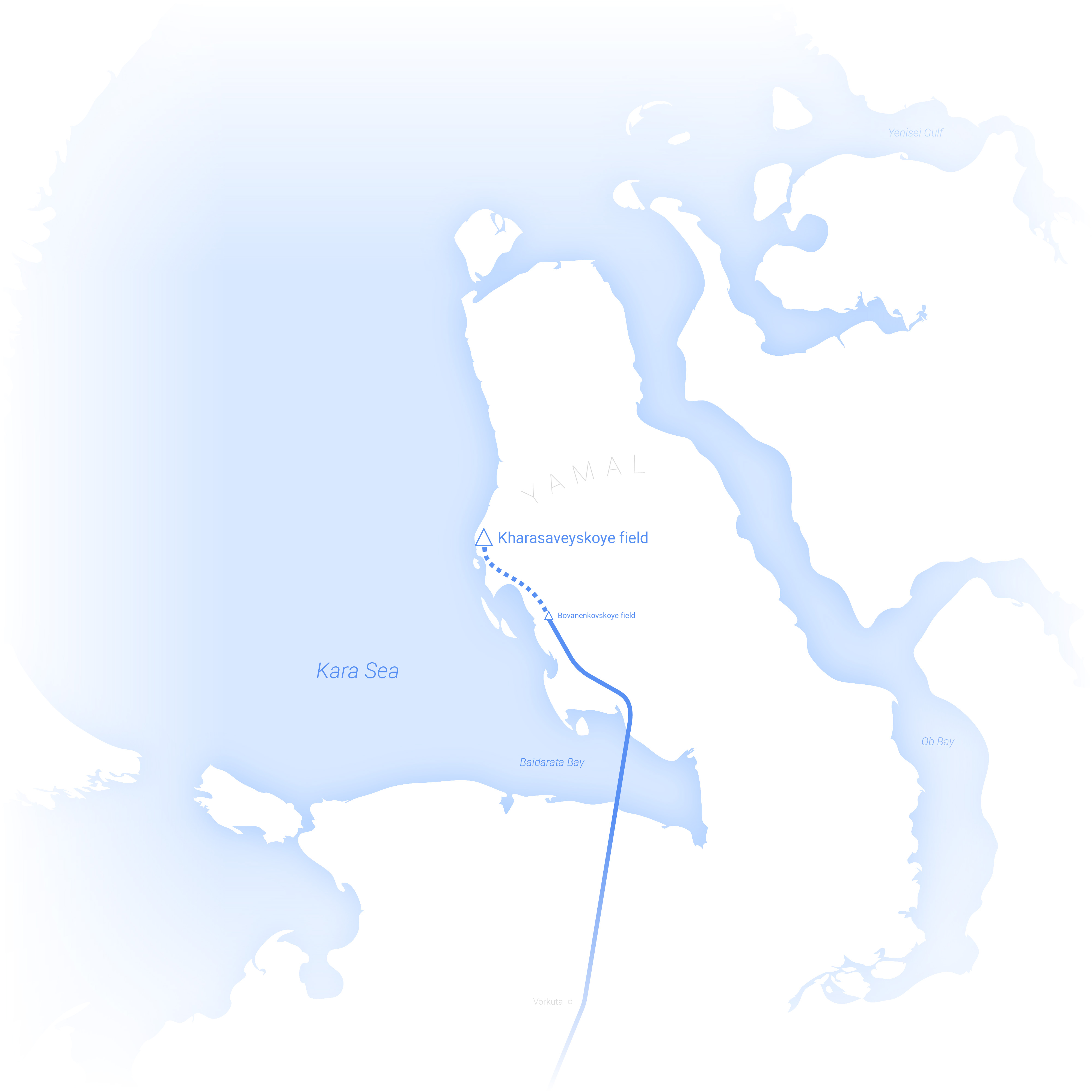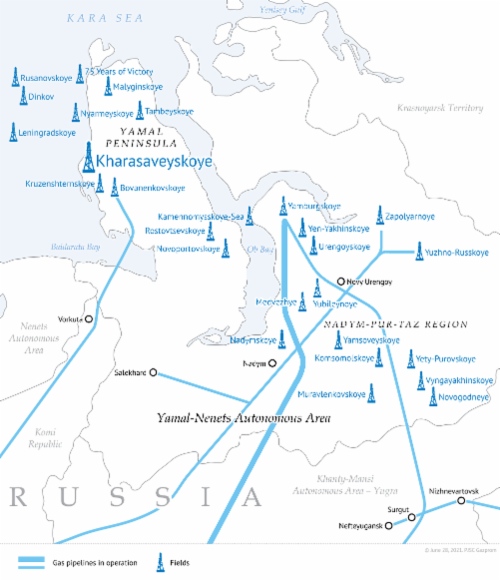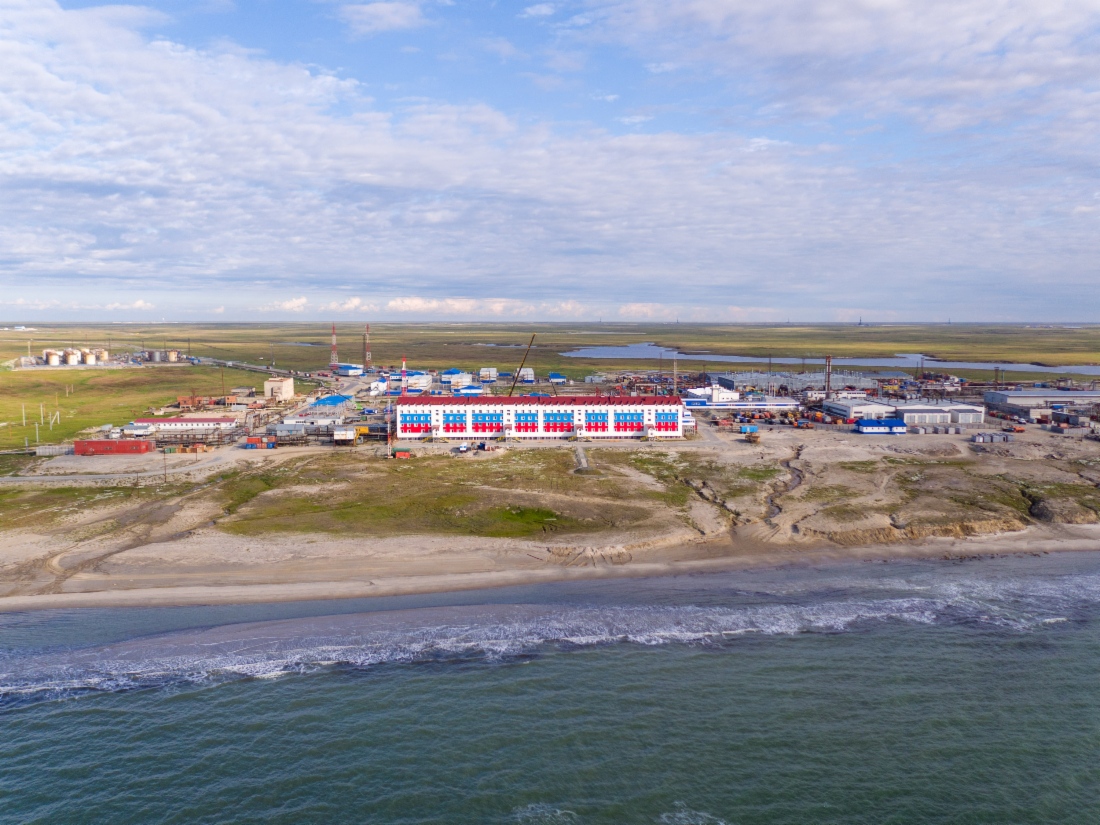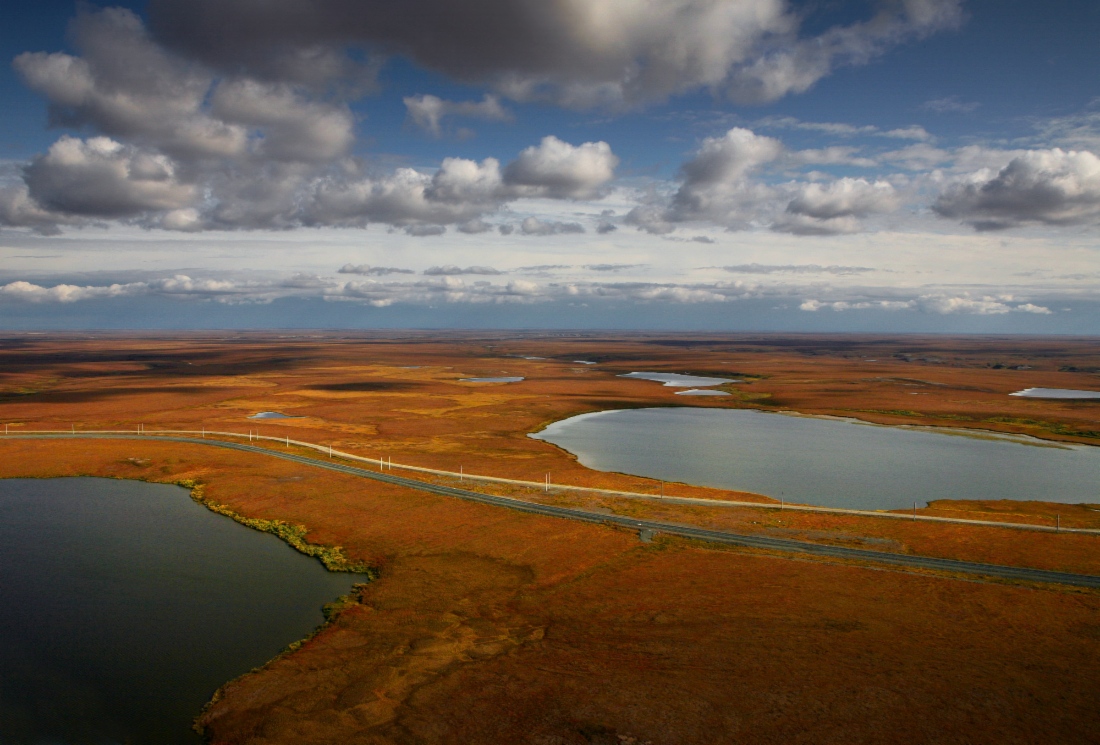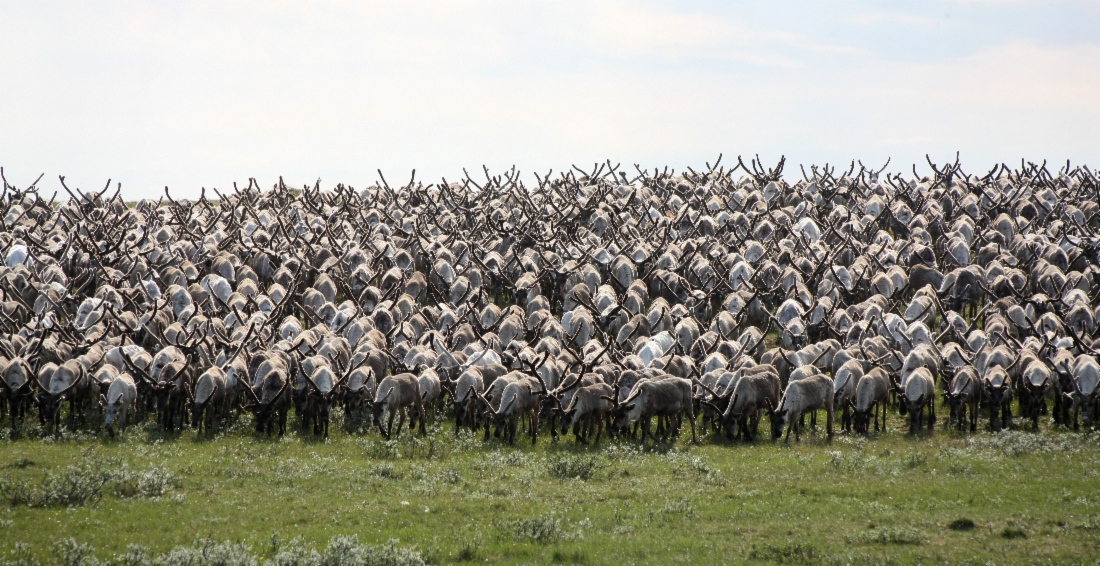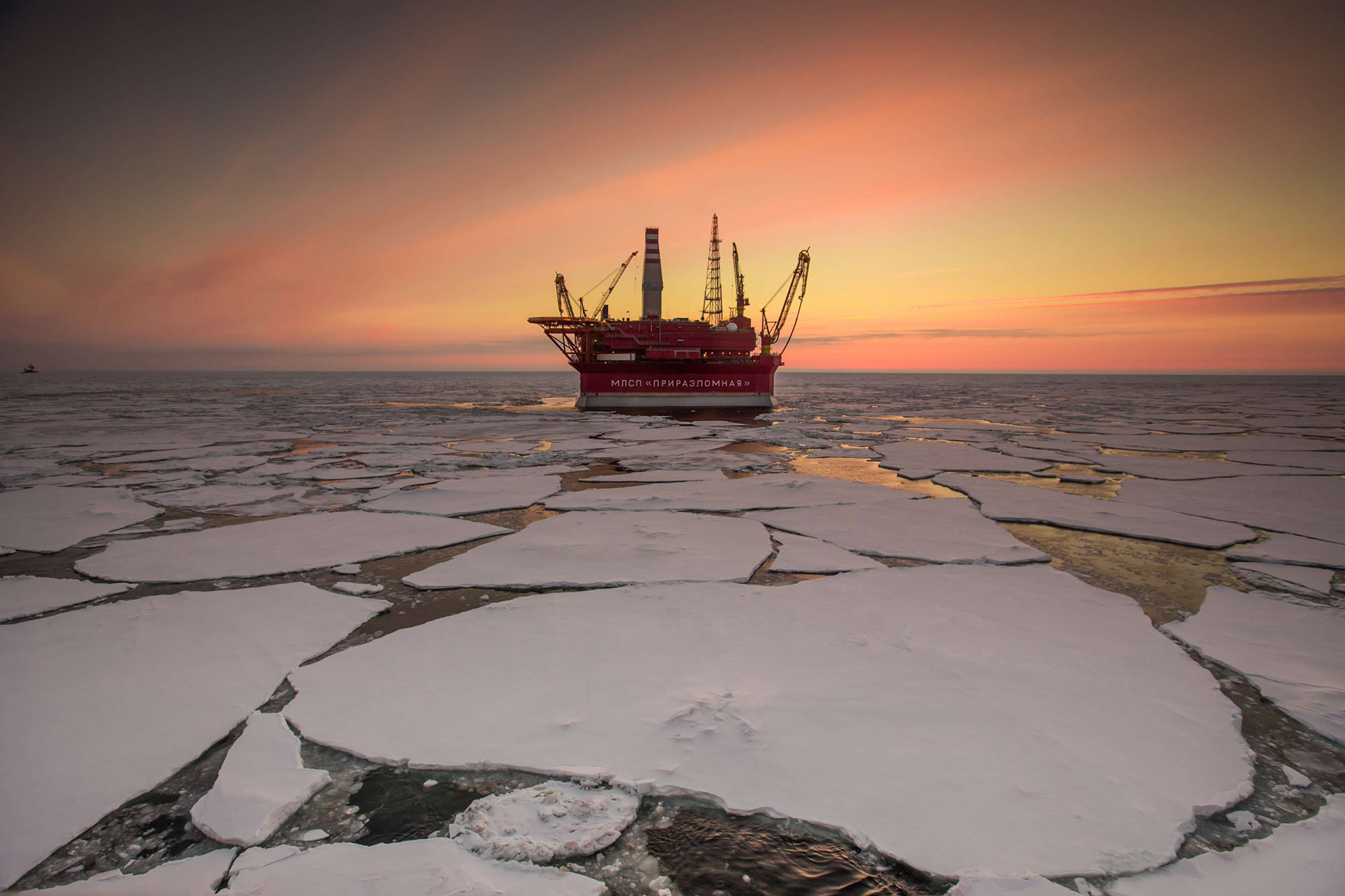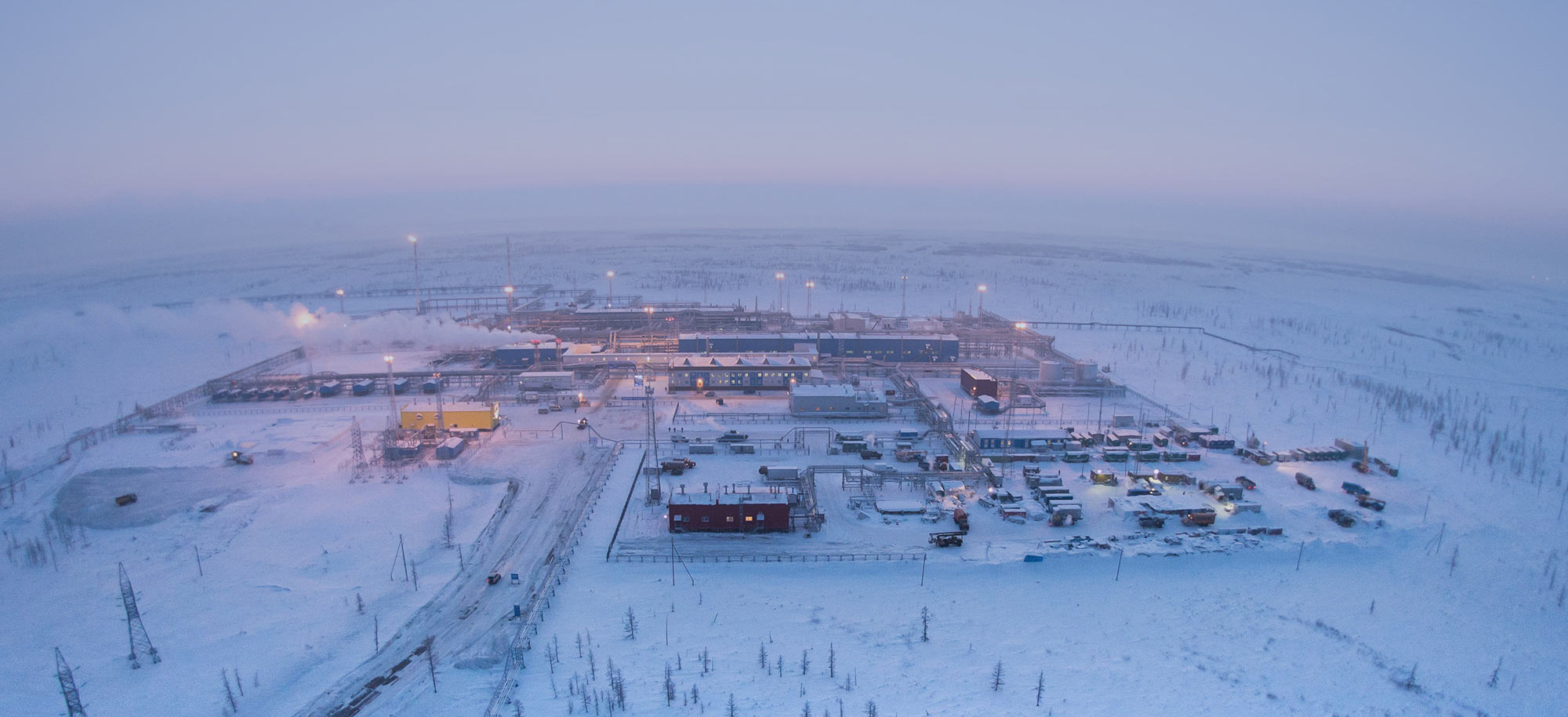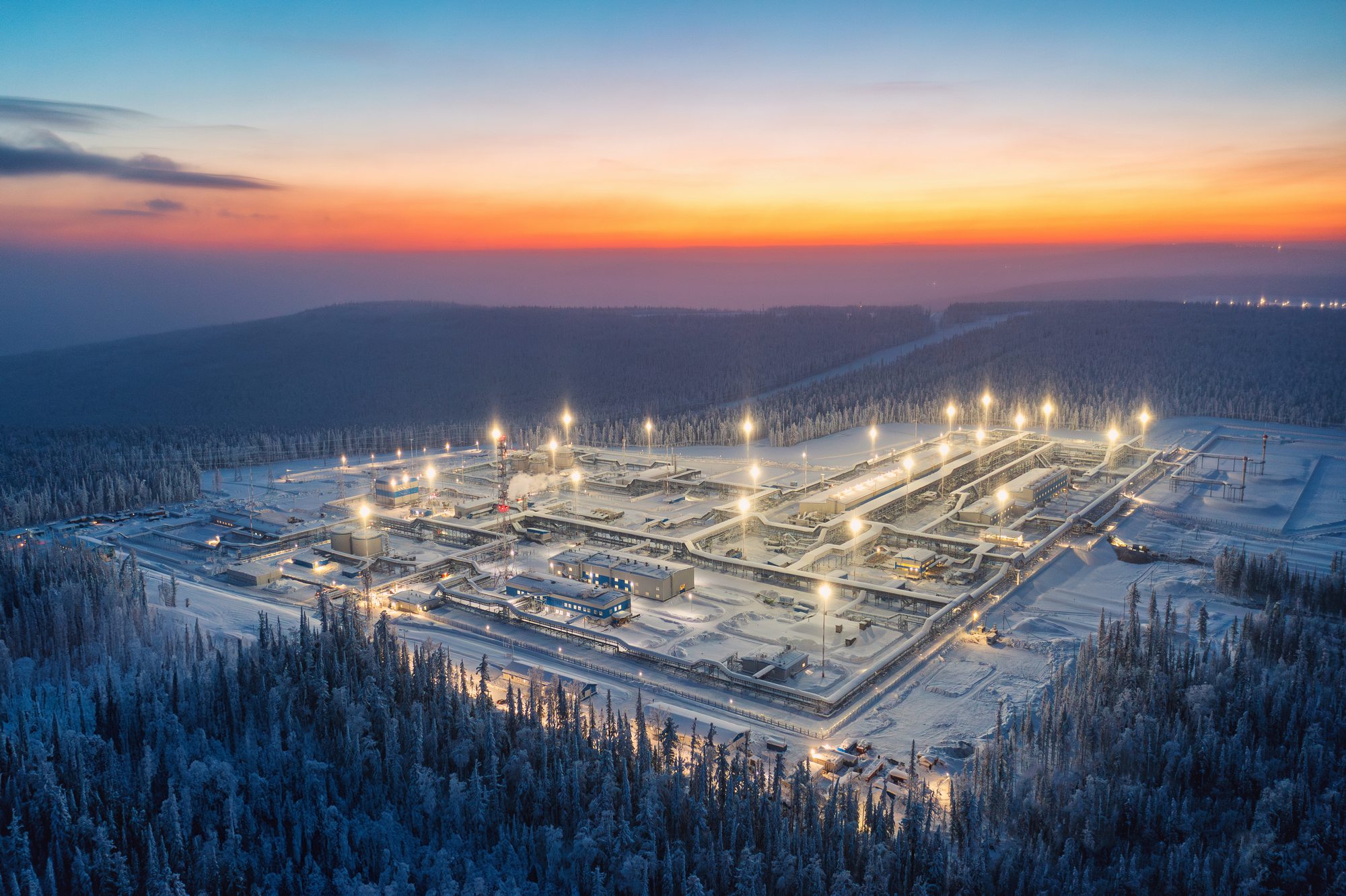The Yamal Peninsula is a strategic oil- and gas-bearing region of Russia.
The aggregate gas reserves and resources found in all fields of the Gazprom Group in the Yamal Peninsula and the Yamal shelf of the Kara Sea make up 20.4 trillion cubic meters. The Yamal gas production center is key to the development of the Russian gas industry in the 21st century. Gazprom intends to carry out production operations in Yamal for over 100 years.
Figures and facts
The Kharasaveyskoye field is located in the Yamal Peninsula north of the Bovanenkovskoye field, predominantly onshore and partly in the Kara Sea.
The field is classified as unique thanks to its enormous gas reserves, which amount to around 2 trillion cubic meters (C1+C2 categories).
It is planned to produce 32 billion cubic meters of gas per year from its Cenomanian-Aptian deposits.
Gas production operations are going to last until 2131.
Project implementation
In March 2019, Gazprom started full-scale development of the Kharasaveyskoye field. As of now, the field already has a utility system with a camp for shift workers and an auxiliary power station.
The field’s Cenomanian-Aptian deposits are going to be the first development target. Gas production at the Kharasaveyskoye field is going to start in 2023. After this, the Company is going to proceed with developing the deeper-lying Neocomian-Jurassic deposits.
Infrastructure and transportation
The project envisages the construction of a comprehensive gas treatment unit, a booster compressor station, clusters of producing gas wells, and transportation and power infrastructure. Offshore wells will be drilled from onshore locations.
In winter, materials and equipment will be delivered to the field by the Obskaya – Bovanenkovo railroad and a winter road from the Karskaya station. In summer, cargo deliveries to the Kharasavey port station will be made by sea and river transport.
In order to convey gas produced from the field, a 100-kilometer gas pipeline connecting Kharasaveyskoye and Bovanenkovskoye will be built. The gas will then be fed into Russia’s Unified Gas Supply System.
Environmental protection
Gazprom places great emphasis on maintaining a high level of industrial safety and preserving the unique Arctic environment. Kharasaveyskoye is characterized by complex geocryological conditions, including thick permafrost and high soil salinity, which makes it especially difficult to set up facilities in the area. In order to avoid the risks of permafrost melting, it is planned to widely use vapor-liquid cooling systems. To prevent permafrost from melting during gas production, wells will be constructed with thermally-insulated tubings and casings. Closed-loop water supply systems will help avoid soil and water pollution. The field’s linear facilities will be provided with special crossings for deer and wildlife migration.

